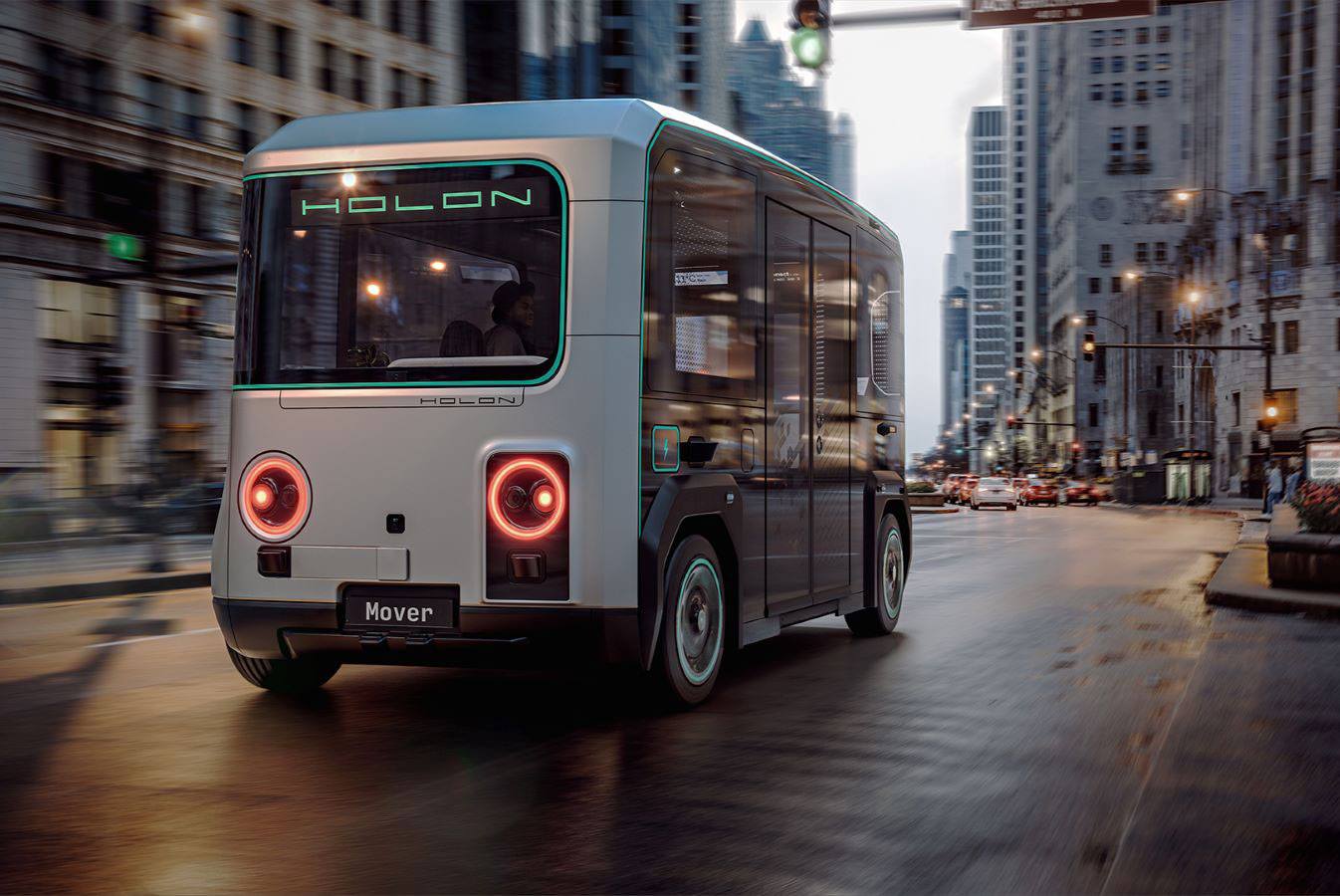Bus rapid transit (BRT) offers cities a flexible and cost-effective solution for improving urban mobility. But what, exactly, is bus rapid transit? And what should cities consider when planning a BRT system? Designers from HOK, Pininfarina and Austin Transit Partnership share insights.
In an era of bold new transportation promises, the bus hardly has the same appeal of, say, hyperloops and electric air taxis. Yet, to dismiss the bus as a bygone solution for public transit could be a costly mistake. That’s especially true when it comes to bus rapid transit.
To better understand the evolution and potential of bus rapid transit, HOK hosted a LinkedIn Live with a panel of big thinkers on the topic of urban mobility and transit infrastructure. Joining the conversation were Felix Kilbertus, chief creative officer of Pininfarina; Paulo Faria, senior vp of architecture and urban design with the Austin Transit Partnership; and Cristina Ungureanu, regional leader of planning for HOK in Los Angeles. Moderating the conversation was Luke Bridle, a director of transportation for HOK’s Aviation + Transportation practice.
The panel discussed how cities around the world are implementing bus rapid transit, how BRTs support adaptability, equity and sustainability, and how bus and infrastructure design is improving the passenger experience.
Watch the full discussion below or jump down to read a few key takeaways.
BRTs in Theory and Practice
The conversation began with Paulo Faria defining bus rapid transit. “Bus rapid transit is about bringing the benefits of a fixed guideway—like rail—to the bus network,” said Faria. “Bus rapid transit means it runs in a dedicated guideway that is protected from other traffic to provide more predictability and punctuality.”
Cristina Ungureanu followed with context on the growth of BRT systems. “BRTs gained popularity globally at the turn of the century,” she said. “In the U.S. we have 450 BRT systems, accounting for 8% of the entire length of systems worldwide. BRTs are now in most major U.S. cities—Seattle, Oakland, Kansas City, Pittsburgh, Boston, Miami, Los Angeles. Houston just greenlit a new 25-mile stretch of BRT with 41 stations.”
Felix Kilbertus provided international examples of bus rapid transit, including successful systems in Germany and countries in Latin America, such as Brazil and Colombia, where BRTs are most popular.
Benefits of Bus Rapid Transit
Moderator Luke Bridle kicked off a conversation on the advantages of BRTs by noting that buses allow commuters to see and experience a city better than subterranean transit. Buses also can reach into underserved neighborhoods, improving social equity. And those are just two benefits of BRTs.
Faria discussed the scalability and adaptability of BRTs, which generally require less money and infrastructure to implement when compared to light-rail or subway. “Flexibility and ease of implementation are two of the biggest advantages of bus rapid transit,” he said.
Another advantage, said Ungureanu, is the ability of BRTs to improve the streetscape, particularly when it comes to station design and location. “BRTs have the ability to create and encourage quality placemaking,” she said. “Stations have the potential to become community hubs and centers of mixed-use activity that generate economic development opportunities and cultural and social exchange.”

The Pininfarina-design HOLON is a fully autonomous passenger vehicle capable of carrying up to 15 people with a range of 290 kilometers (180 miles). Image courtesy of Pininfarina.
Design Strategies for BRTs
Kilbertus discussed how BRTs can improve the passenger experience for commuters through smart design and technology. New electric vehicles eliminate the diesel exhaust, noise and vibration often associated with bus transportation. Bus stations and shelters also influence the passenger experience and can be designed with a focus on comfort, safety and technology. He shared an example of bus shelters his firm recently designed in Miami that include solar power, estimated bus and trolley arrival displays, passenger security systems and ample shading. “These stations can be very site-specific,” said Kilbertus. “You co-create the environment to suit the local conditions.”
Faria provided further context to that point. His team in Austin asked bus commuters to wear monitoring devices that measured their heart rate, perspiration and eye movement. Data from that experiment showed various friction points regarding accessibility, safety and comfort. Shading and thermal safety, for example, are big issues in Austin where temperatures this summer exceeded 100 degrees Fahrenheit for more than 40 days. “There are clear stress points on the bus journey that design can mitigate,” said Faria. “That’s what we’re trying to do as we design our light-rail and expand our rapid bus network.”
What’s Next for Bus Rapid Transit
The conversation ended with the panel looking ahead to what’s next for bus rapid transit.
Technology is already enabling commuters to track the location of buses, and Faria sees that type of information only improving in coming years. “When I think of the future, I think of getting real-time information to commuters. People are accustomed to seeing their Uber’s location on their phone. Providing that information for buses is crucial. No one wants to wait for anything, particularly the bus.”
Kilbertus discussed how autonomous vehicles could one day revolutionize bus transportation, allowing for smaller vehicles that can navigate into more neighborhoods and allow for on-demand service. In place of a driver, the bus could have someone serving as a concierge or conductor. “It’s interesting to think how we can help the driver become a host of sorts who can welcome people on board. This person can help people in a way today’s driver cannot.”
As for Ungureanu, she sees BRTs expanding outside of big cities to connect people who today don’t have good public transportation options. “I’m excited to see BRT systems operate in less dense environments,” she said. “I’m talking about cities like Alburquerque and suburban and exurban communities.”
Related content:
Designing Transit Projects for Equity
How Houston’s New Bus Rapid Transit Line Can Build on Its Light Rail Legacy